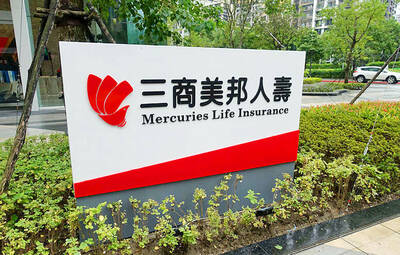Online retailer Pinkoi.com yesterday unveiled a project to invest in more than 10 local brands in a bid to capture the nation’s rapidly expanding creative industry.
The investments are to be made via a new fund set up by Cherubic Ventures Co (心元), which has invested in Pinkoi.
The Taipei-based start-up that specializes in the sale of original design goods is one of the largest e-commerce platforms in Taiwan, and has expanded its reach across Asia to include Japan, China, Hong Kong and Thailand.
“The creative industry makes up 4.8 percent of Taiwan’s GDP, which accounts for 10 percent of the market in Asia,” Pinkoi CEO and founder Peter Yen (顏君庭) said.
Local brands often struggle to reach a bigger audience, so the company provides them a stage to better show off their designs and to sell internationally, Yen said.
The company in 2013 reported revenue of US$2.5 million, but has not disclosed its revenue since.
“Local governments are investing and encouraging growth in the creative industry as we realize its strong cultural influence and business potential,” said Chen Yue-yi (陳悅宜), director of the Ministry of Culture’s Department of Cultural and Creative Development.
The South Korean creative industry in 2017 recorded an output value of NT$3.3 trillion (US$107 billion), compared with NT$834 billion in Taiwan, Chen said.
The creative industry is now a booming sector in the global economy, Pinkoi said, citing a report by the UN Conference on Trade and Development (UNCTAD).
The value of creative goods globally has doubled from US$208 billion in 2002 to US$509 billion in 2015, with an annual compound growth rate of more than 7 percent, the report said.
Asia alone contributed US$228 billion, representing almost half of the overall value of creative goods worldwide — double that of Europe, data showed.
Taiwan, China, Singapore, India and Thailand were among the top 10 best-performing markets in terms of trade, the report said.
“The creative economy has both commercial and cultural worth,” UNCTAD Division on International Trade and Commodities Director Pamela Coke-Hamilton said. “This dual value has led governments worldwide to focus on expanding and developing their creative economies as part of economic diversification strategies and efforts to stimulate prosperity and well-being.”

Mercuries Life Insurance Co (三商美邦人壽) shares surged to a seven-month high this week after local media reported that E.Sun Financial Holding Co (玉山金控) had outbid CTBC Financial Holding Co (中信金控) in the financially strained insurer’s ongoing sale process. Shares of the mid-sized life insurer climbed 5.8 percent this week to NT$6.72, extending a nearly 18 percent rally over the past month, as investors bet on the likelihood of an impending takeover. The final round of bidding closed on Thursday, marking a critical step in the 32-year-old insurer’s search for a buyer after years of struggling to meet capital adequacy requirements. Local media reports

US sports leagues rushed to get in on the multi-billion US dollar bonanza of legalized betting, but the arrest of an National Basketball Association (NBA) coach and player in two sprawling US federal investigations show the potential cost of partnering with the gambling industry. Portland Trail Blazers coach Chauncey Billups, a former Detroit Pistons star and an NBA Hall of Famer, was arrested for his alleged role in rigged illegal poker games that prosecutors say were tied to Mafia crime families. Miami Heat guard Terry Rozier was charged with manipulating his play for the benefit of bettors and former NBA player and

TECHNOLOGICAL RIVALRY: The artificial intelligence chip competition among multiple players would likely intensify over the next two years, a Quanta official said Quanta Computer Inc (廣達), which makes servers and laptops on a contract basis, yesterday said its shipments of artificial intelligence (AI) servers powered by Nvidia Corp’s GB300 chips have increased steadily since last month, should surpass those of the GB200 models this quarter. The production of GB300 servers has gone much more smoothly than that of the GB200, with shipments projected to increase sharply next month, Quanta executive vice president Mike Yang (楊麒令) said on the sidelines of a technology forum in Taipei. While orders for GB200 servers gradually decrease, the production transition between the two server models has been

BETTER THAN EXPECTED: The firm’s Q3 results exceeded its projections, based on ‘the underlying strength of our core markets,’ chief financial officer Dave Zinsner said Intel Corp returned to profitability and gave an upbeat revenue forecast after PC demand grew, suggesting that it is making progress on a long and challenging comeback attempt. In the third quarter, revenue rose 3 percent to US$13.7 billion. The Santa Clara, California-based company posted its first quarterly net income since the end of 2023, with earnings per share of US$0.23, excluding some items. Analysts had estimated sales of US$13.2 billion and earnings per share of US$0.01 on average, according to data compiled by Bloomberg. Fourth-quarter sales would be roughly US$13.3 billion, the company said in a statement on Thursday. Intel shares gained about